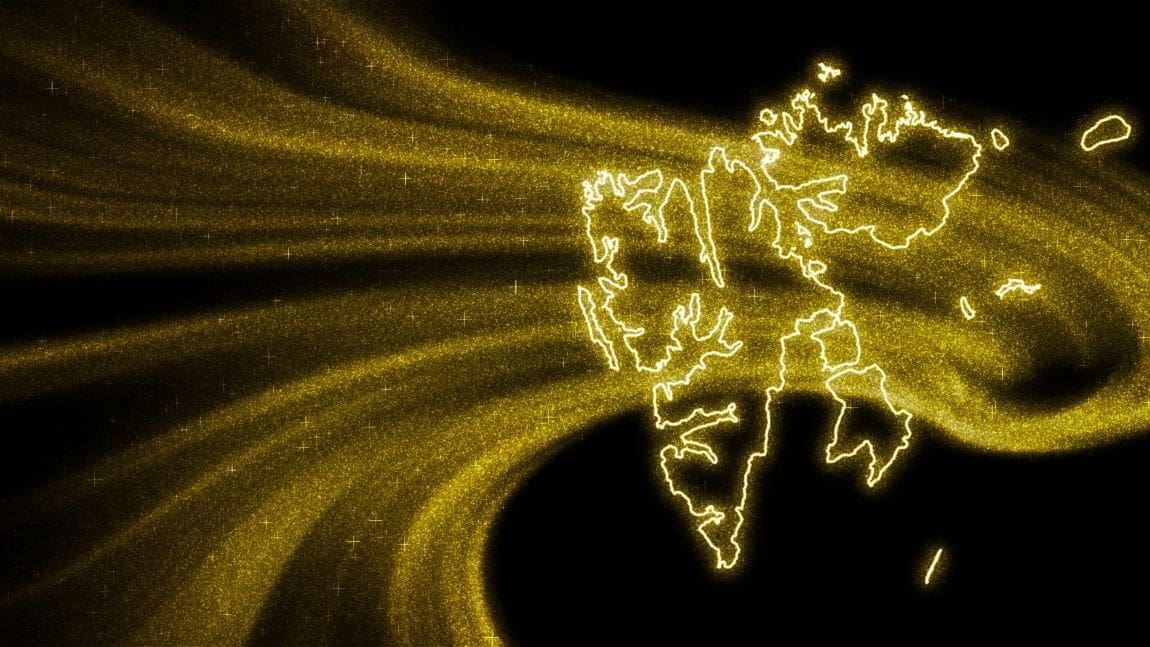By MARUM – Center for Marine Environmental Sciences, University of Bremen
Study of the Jøtul hydrothermal field, discovered in 2022, has now been published in the professional journal Scientific Reports.
Hydrothermal vents are seeps on the sea floor from which hot liquids escape. “Water penetrates into the ocean floor where it is heated by magma. The overheated water then rises back to the sea floor through cracks and fissures. On its way up the fluid become enriched in minerals and materials dissolved out of the oceanic crustal rocks. These fluids often seep out again at the sea floor through tube-like chimneys called black smokers, where metal-rich minerals are then precipitated,” explains Prof. Gerhard Bohrmann of MARUM and chief scientist of the MARIA S. MERIAN (MSM 109) expedition.
At water depths greater than 3,000 meters, the remote-controlled submersible vehicle MARUM-QUEST took samples from the newly discovered hydrothermal field. Named after Jøtul, a giant in Nordic mythology, the field is located on the 500-kilometer-long Knipovich Ridge. The ridge lies within the triangle formed by Greenland, Norway and Svalbard on the boundary of the North American and European tectonic plates. This kind of plate boundary, where two plates move apart, is called a spreading ridge.
The Jøtul Field is located on an extremely slow spreading ridge with a growth rate of the plates of less than two centimeters per year. Because very little is known about hydrothermal activity on slow spreading ridges, the expedition focused on obtaining an overview of the escaping fluids, as well as the size and composition of active and inactive smokers in the field.
“The Jøtul Field is a discovery of scientific interest not only because of its location in the ocean but also due to its climate significance, which was revealed by our detection of very high concentrations of methane in the fluid samples, among other things,” reports Gerhard Bohrmann.
Methane emissions from hydrothermal vents indicate a vigorous interaction of magma with sediments. On its journey through the water column, a large proportion of the methane is converted into carbon dioxide, which increases the concentration of CO2 in the ocean and contributes to acidification, but it also has an impact on climate when it interacts with the atmosphere.
The amount of methane from the Jøtul Field that eventually escapes directly into the atmosphere, where it then acts as a greenhouse gas, still needs to be studied in more detail. There is also little known about the organisms living chemosynthetically in the Jøtul Field. In the darkness of the deep ocean, where photosynthesis cannot occur, hydrothermal fluids form the basis for chemosynthesis, which is employed by very specific organisms in symbiosis with bacteria.
In order to significantly expand on the somewhat sparse information available on the Jøtul Field, a new expedition of the MARIA S. MERIAN will start in late summer of this year under the leadership of Gerhard Bohrmann. The focus of the expedition is the exploration and sampling of as yet unknown areas of the Jøtul Field. With extensive data from the Jøtul Field it will be possible to make comparisons with the few already known hydrothermal fields in the Arctic province, such as the Aurora Field and Loki’s Castle.
The published study is a part of the Bremen Cluster of Excellence ‘The Ocean Floor – Earth’s Uncharted Interface’, which explores complex processes on the sea floor and their impacts on global climate. The Jøtul Field will also play an important role as an object of future research in the Cluster.
MARUM produces fundamental scientific knowledge about the role of the ocean and the seafloor in the total Earth system. The dynamics of the oceans and the seabed significantly impact the entire Earth system through the interaction of geological, physical, biological and chemical processes. These influence both the climate and the global carbon cycle, resulting in the creation of unique biological systems. MARUM is committed to fundamental and unbiased research in the interests of society, the marine environment, and in accordance with the sustainability goals of the United Nations. It publishes its quality-assured scientific data to make it publicly available. MARUM informs the public about new discoveries in the marine environment and provides practical knowledge through its dialogue with society. MARUM cooperation with companies and industrial partners is carried out in accordance with its goal of protecting the marine environment.
More information: Bohrmann, G., Streuff, K., Römer, M. et al., ‘Discovery of the first hydrothermal field along the 500-km-long Knipovich Ridge offshore Svalbard (the Jøtul field)’, Scientific Reports (14, 10168; 2024); DOI: 10.1038/s41598-024-60802-3.
Article Source: MARUM / University of Bremen Press Release.
Featured image credit: Allexxandar | Freepik




